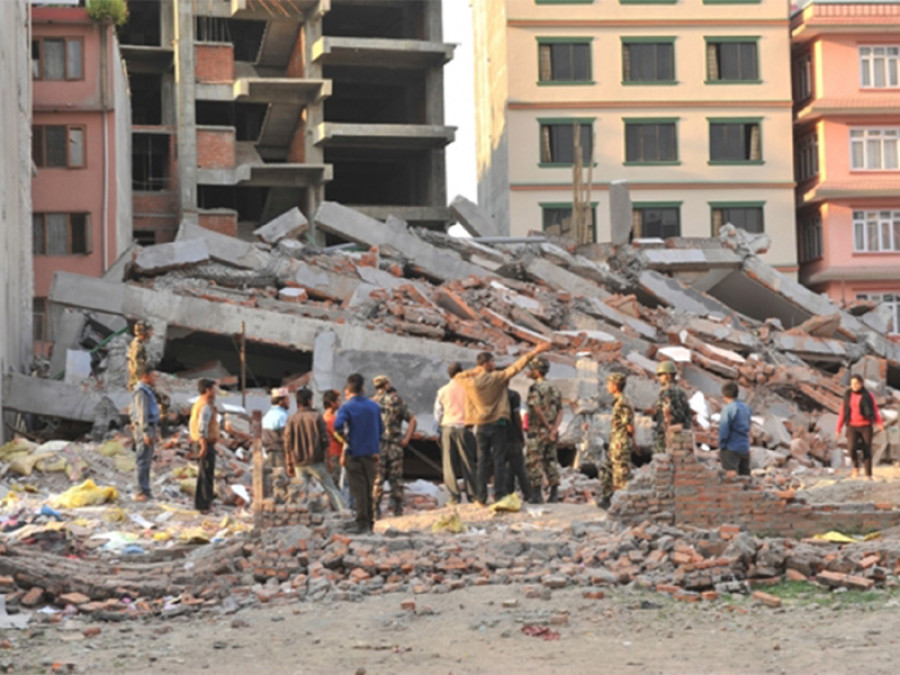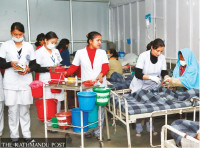Miscellaneous
Disaster mgmt policy lacking: Home Ministry
Lack of coordination between different government agencies at policy and implementation levels means the country is still under prepared should another major natural disaster befall on the state, the Home Ministry has warned.
Lack of coordination between different government agencies at policy and implementation levels means the country is still under prepared should another major natural disaster befall on the state, the Home Ministry has warned.
“An umbrella framework that guides all sectors of the country towards disaster preparation is absent,” Spokesperson and Joint Secretary at the Home Ministry Yadav Koirala said at a programme in the Capital on Sunday.
“There is no coordination and we have not been able to even identify a responsible body in times of disaster.”
The 7.8-magnitude Gorkha earthquake on April 25 last year killed nearly 9,000 people and affected a third of the country’s 28 million population. More than 600,000 houses were destroyed and damaged another 300,000 in the worst natural disaster to hit the country in almost 80 years.
In the immediate aftermath of the disaster, complaints poured in from all quarters over the government’s “very slow” response in carrying out rescue and relief operations.
The government had created central and local clusters to deal with possible natural disasters before the earthquake. Three humanitarian areas were created in the Capital to accommodate 50,000 displaced people in each of them while regular awareness programmes were being held. Yet, the government had failed to establish warehouses to store non-food relief items while coordination was lacking.
Blaming settlement and housing policy for the late response in some areas, Koirala also accused the state of failing to maintain law and order in cases of allowing the construction of illegal buildings. “Overall, 99.5 percent of the houses have been built illegally and should be demolished, but nobody does,” he said. “Even I have built a tall house with space for shutters on the ground floor, but who is there to say I cannot?”
Speaking at the programme, DSP Dhakendra Khatiwada, chief of Home Ministry’s Disaster Management Section, said that his office was ill prepared when the earthquake struck last April. “We were understaffed and very few people were trained in technical search and rescue operation,” Khatiwada said. He also pointed out the lack of coordination between the three security forces—Nepal Police, Armed Police Force and Nepal Army—during the search and rescue operation.
The number of staff at the section has since been increased to 1,072 with 446 at the centre and 125 each in five development regions, according to Khatiwada. “They are receiving regular training and the response in case of another disaster will be better.”
The Home Ministry has also drafted several working procedures and policies after the Gorkha earthquake to deal with future disasters, Koirala said.




 14.12°C Kathmandu
14.12°C Kathmandu







%20(1).jpg&w=300&height=200)

